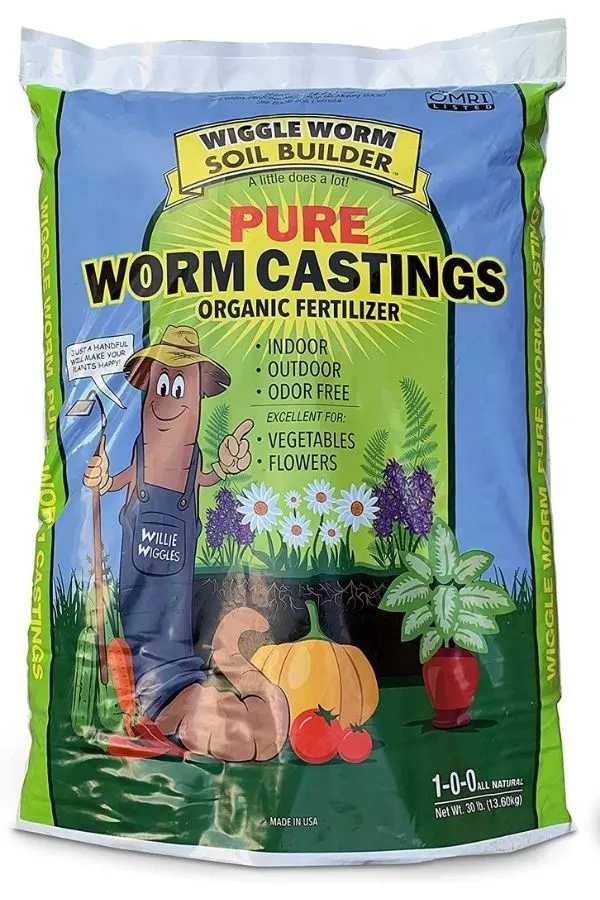When it comes to growing great healthy, strong, and most importantly, productive tomato plants – it all starts with avoiding 4 of the biggest and most common tomato planting mistakes many gardeners make when first putting their plants in the ground!
The first few weeks of a tomato plant outdoors is vital to its long term healthy and productivity. Unfortunately, if a newly planted transplant sits in the soil and fails to establish more roots, it can spell disaster for the plant long term.
Plants that fail to take hold are more likely to succumb to pests and disease. And even more, a lack of early root growth means the plant will struggle to absorb water and nutrients from the soil. In addition, little to no growth up top means the plant has less foliage to absorb sunlight to power photosynthesis – resulting in even less energy.
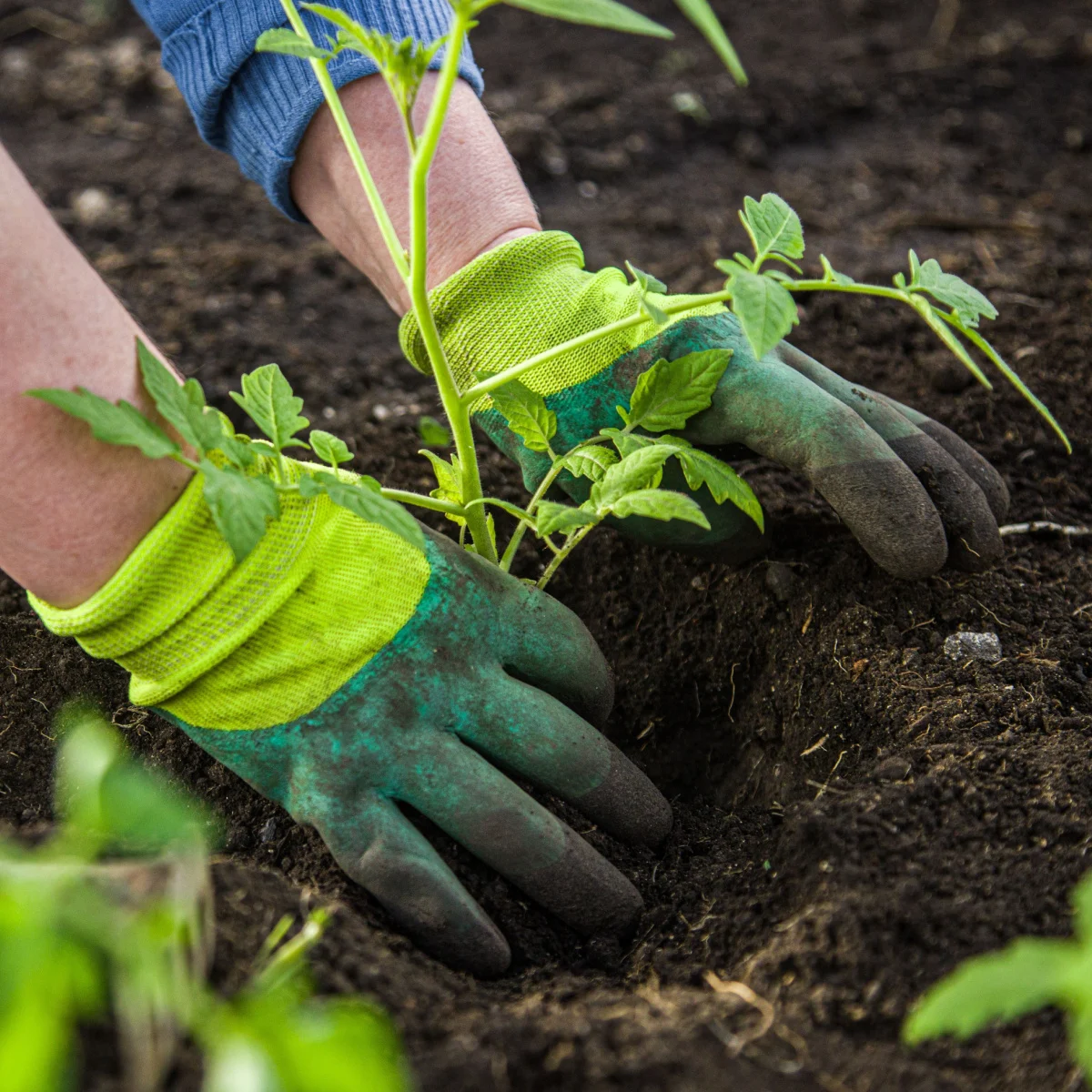
The good news is that when tomato plants fail to take off – it can almost always be traced back to when and how it was planted. And by simply avoiding a few common planting pitfalls – you can all but ensure getting your plants off to a great start.
The 4 Biggest Tomato Planting Mistakes
Tomatoes come in all different sizes, shapes, colors, styles, and growing patterns. But no matter if you grow determinate or indeterminate tomatoes; large slicing or little cherry tomatoes; avoiding the four following critical mistakes is a must to get plants growing quickly – and it all starts with making sure you don’t plant too early!
#1 – Planting Too Early
We’ve all been there – It’s been a long, cold winter and you’re ready to get your hands dirty.
Maybe you are staring seeds indoors to get a head start. Or, maybe you are going to be purchasing transplants and have started to see them everywhere at local nurseries. Whatever the case, you have to be sure not to start to early. Especially when it comes to planting them outdoors.
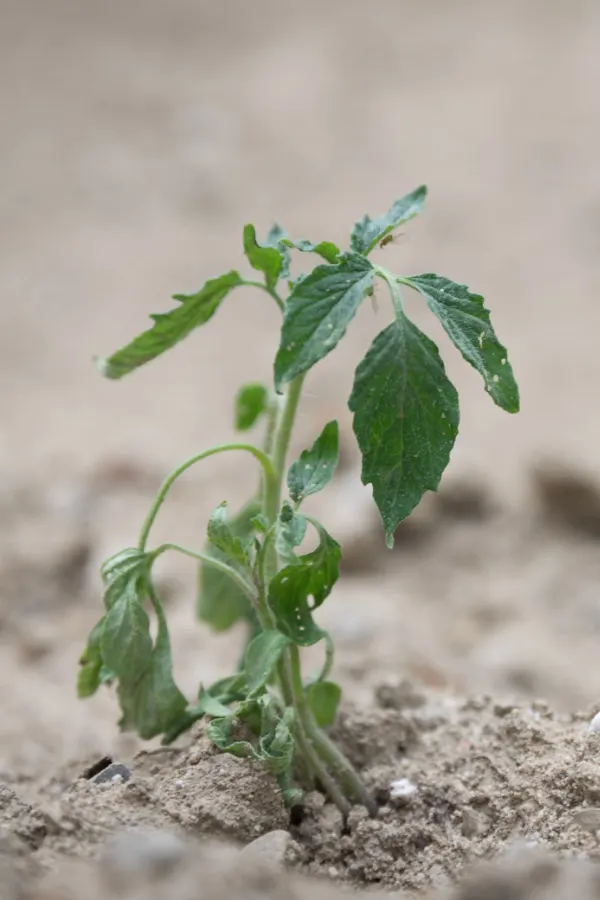
Tomatoes are warm weather-loving crops. Once established, they thrive in temperatures between 75 to 95º Fahrenheit. But they need warm soil in the beginning even more to produce strong, healthy roots and to grow properly.
First and foremost, if you plant your tomatoes outside when a late frost or freeze can still occur, it can completely take out your plants. Even if they do survive, they will likely have stunted growth with little production.
But even more than that – tomato transplants need to be planted in warm soil. If the soil isn’t warm enough, plant’s roots will struggle to grow and develop properly. This can leave them susceptible to rot and mildew, and poor production later.
It’s a must to wait until your soil is at least 60º before putting them in the soil. One of the best tools to invest in is an inexpensive soil thermometer. In seconds, you will know if your soil is ready for planting – or not! (Product Link: Urban Worm Soil Thermometer)
#2 – The Mistake Of Planting Tomato Plants Too Shallow
Another big mistake is not planting your transplants deep enough. With most plants, the stem should stay above the soil line while the roots are under the ground. But with tomatoes, the deeper you plant them the better they will grow. Why? Because tomato plants can grow new roots all along their stem!
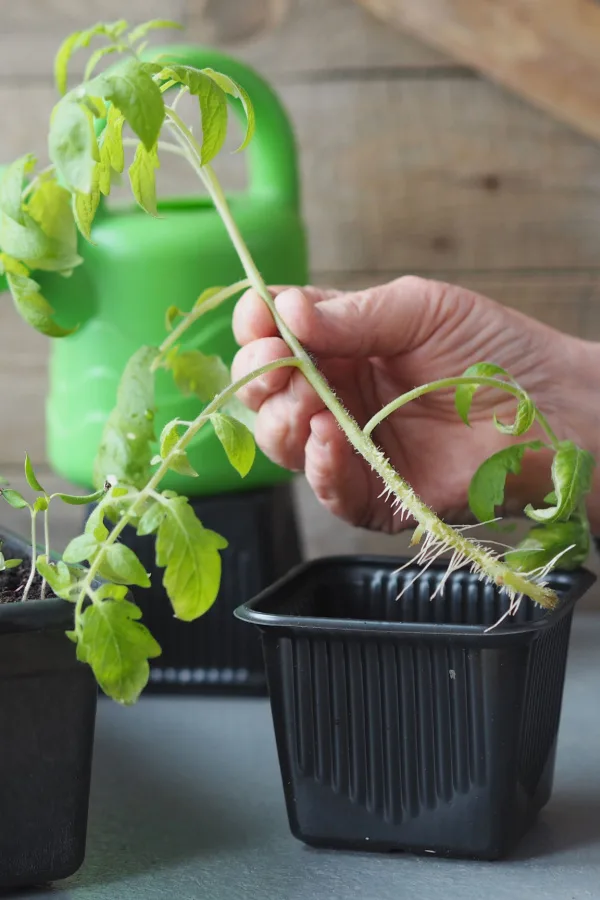
Tomato plants are capable of growing long roots. When the plant tissue on a tomato’s stem contacts soil, it shoots out roots that will help anchor and grow the mature plant.
Why Big Roots Matter
A big root system is important for more than just soaking in more nutrients and water. When full-grown plants are full of ripening fruit, their stems are burdened by the weight. If a plant doesn’t have enough of a strong root structure in the soil, it can easily topple over – even if it has a cage or stake as a support.
To help ensure that your tomato plants do have a strong root structure, plant them at least 8 to 10 inches deep. That means that you will likely need to bury a portion of the stem and even some of the leaves as well.
#3 – Planting Without Adding Power
Whatever you do, avoid the tomato planting mistake of simply putting your plant in the ground and covering it up! Instead, fill that planting hole with power! So many gardeners make the mistake of not adding valuable supplements to their planting hole. By simply adding a few power-laden ingredients, you can set your plants up for big success.
Start by mixing in 2 to 3 cups of compost in every planting hole. Compost gives plants a myriad of easy to absorb nutrients. And even more, it helps the plant retain moisture around its roots.
In addition, add in 2 tablespoons of crushed egg shells power to give plants plenty of calcium. Egg shells are made up of over 90% calcium. But by crushing them first, the power can get to the plants quicker. See: A Simple & Safe Way To Save Egg Shells All Winter
Finally, don’t forget the worm castings! Worm castings are filled with the low and slow nutrients that tomato plants love. They also help to loosen soil and retain moisture as well. Add 1/2 cup to 3/4 cup in every planting hole. Affiliate Link: 100% Worm Castings
#4 – Not Mulching Tomato Plants
Lastly, another common mistake gardeners make when planting tomatoes is not using mulch. Mulch is vital for tomato plants and acts as a type of protective shield. It helps to protect the tomato plants and in return adds wonderful organic matter back to the soil as it breaks down.
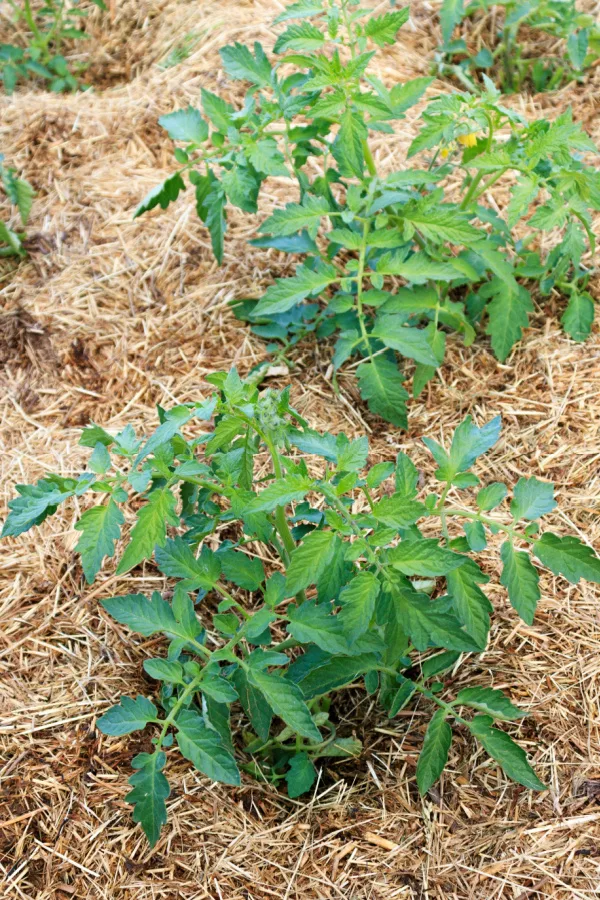
Organic materials such as grass clippings, straw, shredded leaves and even compost are perfect all-natural mulches. Not only are these materials easily accessible, but you can also often get them inexpensively or even for free.
Mulch helps to retain valuable moisture in the soil. And because tomatoes are made up of 95% water, moisture is a huge aspect of growing healthy, plump fruit. Mulch also helps reduce the frequency with which you need to water plants.
But there is more! Mulch can also help stop soil born diseases such as tomato blight from getting to the plant’s lower leaves – all while helping to regulate soil temperatures, which in turn helps prevent roots from having too much stress.
In addition and probably one of the best reasons for using mulch, is that it helps to suppress weeds. A plant competing for nutrients with weeds will struggle to grow properly – but mulch can keep weeds away.
Here’s is to avoid four of the most common tomato planting mistakes, and to growing your best crop of tomatoes ever!
Simple Garden Life
Follow Our Facebook Page For Even More Great Tips! Simple Garden Life Facebook Page
Simple Garden Life is a website dedicated to keeping gardening fun, simple and enjoyable! We publish two new articles each week along with a new garden podcast episode every two weeks. This article may contain affiliate links.

